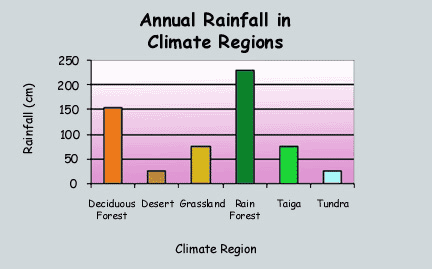Three carnivores
Arctic fox has a small nose curled ears and white fur
Gray fox has long nose point ears and gray and Browne fur
And the poler bear white fur and and a long nose and can swim in waters that are very cold
Three herbivores are
Mt. Goat has white fur big horns sometimes curled and only eat plants
The Arctic ground squirrel has brown fur bushy tail and it has big eyes
And caribou
The factors are winter is most of the year and summer is for a short time and the animals have lots of food
The animals have to adapt by having lots of fur and camouflage also being the bigger animal is better
Links to food cains/webs. 1.http://www.google.com/imgres?imgurl=http://337be24b3dc6fa88319a-7601ef3edefa8ce5b9804dfa0e8536c1.r65.cf2.rackcdn.com/658689C3-459D-4986-A79D-F4B6BFDA1AA2.jpg&imgrefurl=http://quoteimg.com/arctic-tundra-animal-food-chain/&h=768&w=1024&tbnid=jlbvlbeGmxFMVM:&zoom=1&docid=tltVPXd2_EJpUM&hl=en&ei=PbEJVaLULIS9yQSdkYGgAg&tbm=isch&client=safari&ved=0CGoQMyg7MDs
2.http://www.google.com/imgres?imgurl=http://beyondpenguins.ehe.osu.edu/files/2011/07/food-web.jpg&imgrefurl=http://beyondpenguins.ehe.osu.edu/issue/tundra-life-in-the-polar-extremes/life-in-the-tundra&h=586&w=882&tbnid=Y35fLOp0ebOulM:&zoom=1&docid=qHl6BP_qYjhOrM&hl=en&ei=d7EJVfjnBYuTyATQqICIAw&tbm=isch&client=safari&ved=0CE4QMygfMB8
Friday, March 13, 2015
Botanist(plant life)
1.bearberry
2.arctic moss
3.caribou moss
4..diamond leaf willow
5.labrador tea
6.Pasque Flower
7.Tufted Saxifrage
8.Arctic Willow
9.Arctic Poppy
10. Cotton grass
These plants adapt to the climate by growing short so they do not blow away. Also, they can grow in the frozen soil, and only grow during the short summer period. Plus, they can get lots of sunlight because there are no trees. tundra means treeless plain. The soil holds lots of water because the snow melts on it. Since there are no trees all the flowers get lots of sunlight.The warmish summer period is warm enough all around to support the plants, and the cold winter winds instantly kill the majority of the plants. some plants can survive year-round.
Thursday, March 12, 2015
Citations
site 1
site 2
site 3
site 4
site 5
please visit these sites. they have so much information, and have AMAZING pictures. this is where we got the majority of our information, besides our teacher.
Geographer:
Work:
http://www.ucmp.berkeley.edu/glossary/gloss5/biome/tundra.html
http://www.slideshare.net/mobile/rmorgado7/tundra-biome-presentation-779618
https://sites.google.com/site/robardsrichardsthetundrabiome/physical-characteristics
http://biome--tundra.weebly.com/human-influences.html
http://en.m.wikipedia.org/wiki/Tundra
Pictures:
http://askabiologist.asu.edu/explore/tundra
http://www.marietta.edu/~biol/biomes/images/tundra/alaskatundra3.jpg
site 2
site 3
site 4
site 5
please visit these sites. they have so much information, and have AMAZING pictures. this is where we got the majority of our information, besides our teacher.
Geographer:
Work:
http://www.ucmp.berkeley.edu/glossary/gloss5/biome/tundra.html
http://www.slideshare.net/mobile/rmorgado7/tundra-biome-presentation-779618
https://sites.google.com/site/robardsrichardsthetundrabiome/physical-characteristics
http://biome--tundra.weebly.com/human-influences.html
http://en.m.wikipedia.org/wiki/Tundra
Pictures:
http://askabiologist.asu.edu/explore/tundra
http://www.marietta.edu/~biol/biomes/images/tundra/alaskatundra3.jpg
Wednesday, March 11, 2015
Weather in The Tundra/ Meteorologist
Tundras have very long and harsh winters, with temperatures in negatives as a high. The growing season ranges from 50 to 60 days. During the growing season,which is about 6-10 weeks, the temperature warms to a sustainable climate. during the summer, it is still very cold. it will never get above 65 degrees. The average winter temperature is -34° C (-30° F), but the average summer temperature is 3-12° C (37-54° F) which enables this biome to sustain life. Rainfall may vary in different regions of the tundra. Yearly precipitation is 6-10 in(15-25 cm) including melting snow. There is a permanently frozen layer of ice 10 in-3 ft. The wind blows average 30-60 mph. The summer only last 6-10 weeks. The summer warms up the permafrost, which causes lots of flowers to bloom. There is a low air pressure. Humidity is average 85%, or high humidity. The weather patterns throughout the year are a 6-10 week summer with usually 35-50 degrees, and the rest of the year is a harsh winter with an average temperature of -30 and below. This effects the organisms in the tundra because most of the animals grow a thick coat of fur to protect them from the harsh temperatures. Also, in the summer, the animals shed their fur, and flowers and plants grow. Then the plants die, and the animals grow their fur back for the next winter.


Geographer
Geographer
The Tundra Biome is a very plain area. It mainly consists of grassy, flat plains, and maybe a few bushes here and there. This place cannot support trees mainly because of its cold climate and harsh growing conditions. There is a scarce amount of physical diversity as these areas are mainly flat with a few mountainous regions. If you were to put it in simpler terms, it could easy be classified as a cold, icy desert.
The tundra is a biome that has extreme temperatures and is a plain area. This place cannot support trees because of its extreme conditions. There are three different types of tundras; Arctic tundra, the Antarctic tundra, and the alpine tundra. These tundras have simple vegetation structure and short seasons. The Arctic and Antarctic tundra have a dark and cold winter. The alpine tundra has warmer seasons.
Humans have influenced the tundra in a bad way by littering. The ice caps melt because people use too much fuel which warms the ice and melts it. In the tundra, tree growth is hindered by low temperatures and short growing seasons.



The Tundra Biome is a very plain area. It mainly consists of grassy, flat plains, and maybe a few bushes here and there. This place cannot support trees mainly because of its cold climate and harsh growing conditions. There is a scarce amount of physical diversity as these areas are mainly flat with a few mountainous regions. If you were to put it in simpler terms, it could easy be classified as a cold, icy desert.
The tundra is a biome that has extreme temperatures and is a plain area. This place cannot support trees because of its extreme conditions. There are three different types of tundras; Arctic tundra, the Antarctic tundra, and the alpine tundra. These tundras have simple vegetation structure and short seasons. The Arctic and Antarctic tundra have a dark and cold winter. The alpine tundra has warmer seasons.
Humans have influenced the tundra in a bad way by littering. The ice caps melt because people use too much fuel which warms the ice and melts it. In the tundra, tree growth is hindered by low temperatures and short growing seasons.
Subscribe to:
Posts (Atom)


